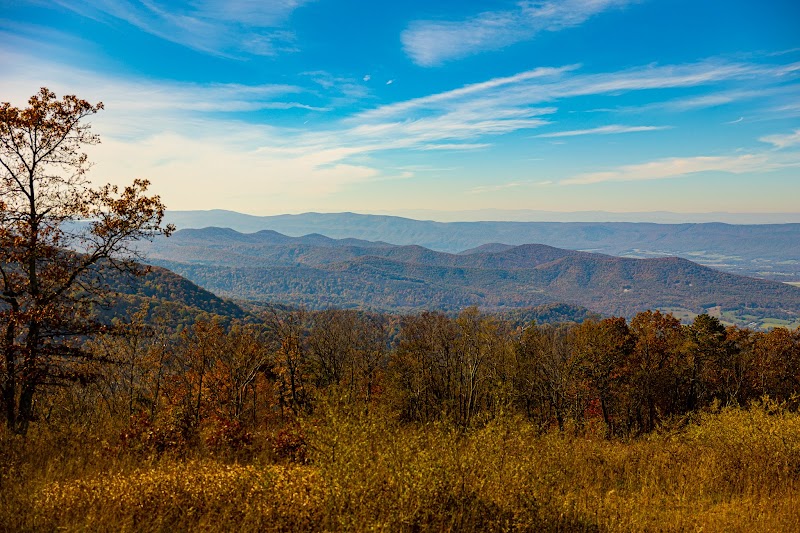
Trailblazing Courage: The Oldest Appalachian Trail Thru-Hiker’s Journey
Earl Shaffer’s legendary Appalachian Trail thru-hike at 69 redefined adventure for older hikers. Learn how this trail’s rugged terrain and variable weather challenged and inspired one of the oldest pioneers to complete the 2,190-mile trek, and discover practical tips to prepare for your own journey.
Footwear Matters
Invest in durable, well-broken-in hiking boots with good ankle support to handle uneven terrain and protect against roots and rocks.
Hydration Strategy
Regularly sip water using a hydration reservoir, aiming for at least 3 liters a day, especially in warmer months to avoid dehydration.
Time Your Hike Wisely
Plan your start and end dates to avoid peak tick season and harsh winter weather; spring and fall bring manageable temperatures and fewer insects.
Pack Light, Pack Smart
Carry only essentials to reduce fatigue—multi-use gear, lightweight shelter, and easy-to-prepare food will help maintain steady progress.
Trailblazing Courage: The Oldest Appalachian Trail Thru-Hiker’s Journey
When Earl Shaffer, at the age of 69, became the oldest person to thru-hike the Appalachian Trail back in 1975, he wasn’t just setting a record — he was redefining what adventure looks like later in life. Covering roughly 2,190 miles from Georgia to Maine, Shaffer’s journey is rooted in persistence and wisdom, traversing forests that whisper their stories and mountains that challenge with every step. The terrain of the Appalachian Trail, with its relentless elevation changes totaling about 464,500 feet of ascent, pushes hikers through rough ridges, swampy stretches, and rock-strewn summits that dare you to keep moving.
Shaffer’s hike was more than a physical feat. It was a practical navigation of nature’s moods — from early spring’s sudden storms to the dense summer humidity that clings like a second skin. His success wasn’t luck but preparation: managing hydration, choosing durable footwear, and pacing his days to respect both the trail and his own limits. For any adventurer dreaming of this challenge, it’s crucial to approach the trail with a plan that balances stamina and stealth—knowing when to push forward and when to rest.
This trail has personality; rivers dare you to cross without faltering, and wind breathes through the trees, hinting at secrets from the deep woods. The Appalachian is fiercely itself, an ancient corridor that demands respect and rewards endurance. Earl Shaffer’s journey illuminates an inspiring message — age is not a barrier, but an added layer of wisdom on the path.
For those preparing to embrace the trail, focus on solid trekking shoes with reliable grip for slippery rocks and roots, carry a hydration system that lets you sip steadily, and time your hike to avoid the worst of summer’s deer tick season. And perhaps most importantly, be ready to listen—to the rustling leaves, the rushing creeks, and the steady rhythm of your heartbeat matching the pulse of the wild.
Earl’s monumental journey is more than history; it’s a blueprint for anyone who wishes to walk with the trail’s raw, unwavering spirit, no matter their stage in life.
Nearby Trips
All Adventures
Boat Charters
Water Activities
Adventures near Harrisonburg, Virginia
Discover the unique and memorable adventures that make Harrisonburg, Virginia special.
Frequently Asked Questions
Who was the oldest person to thru-hike the Appalachian Trail?
Earl Shaffer, at age 69, became the oldest known thru-hiker in 1975, pioneering a demonstration that age need not limit long-distance hiking ambitions.
How long is the Appalachian Trail?
The trail runs approximately 2,190 miles from Springer Mountain, Georgia to Mount Katahdin, Maine, crossing diverse terrains and ecosystems.
What are the main physical challenges of hiking the AT?
The biggest challenges include continuous elevation gain and loss totaling over 464,500 feet, unpredictable weather, and carrying sufficient supplies across remote sections.
When is the best time to start a thru-hike on the AT?
Most hikers begin in early spring (March-April) from the southbound start to avoid severe winter weather in northern sections and complete before the cold returns.
What gear is essential for a thru-hike of the AT?
Key gear includes sturdy hiking boots, a reliable shelter system, efficient hydration options, layered clothing for temperature control, and effective insect protection.
How can older hikers prepare for the trail?
Older hikers should focus on gradual fitness buildup, proper gear selection for support and comfort, pacing logic, and attentive hydration and nutrition strategies.
Recommended Gear
Trail-Ready Hiking Boots
Provides grip and support across rocky and uneven trail surfaces to protect against injury.
Hydration Reservoir or Water Bottles
Allows steady hydration, crucial for stamina and heat management, especially during warm months.
Lightweight Sleeping System
A sleeping bag and pad rated for cool temperatures help maintain energy recovery in variable weather.
Insect Repellent
Protects against ticks and mosquitoes that thrive especially in warmer months and dense foliage.
Local Insights
Hidden Gems
- "Mary's Rock Tunnel overlook in Shenandoah National Park"
- "Simmler Shelter for mountain views"
- "Roaring Run recreation area"
Wildlife
- "white-tailed deer"
- "black bears"
- "wild turkeys"
- "Eastern box turtles"
History
"The Appalachian Trail was completed in 1937, predicated on earlier trail-building efforts. The AT Conservancy and local clubs preserve the trail, rooted in conservation and outdoor heritage."
